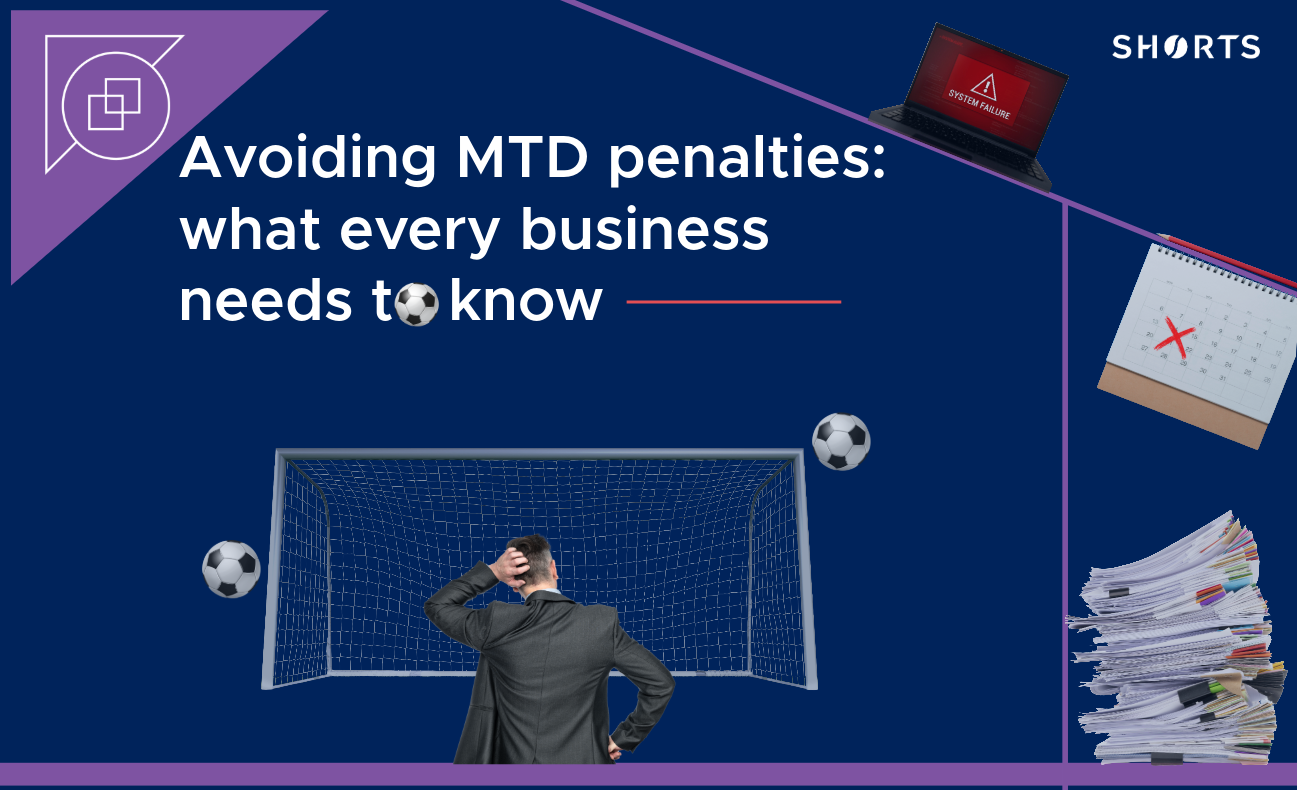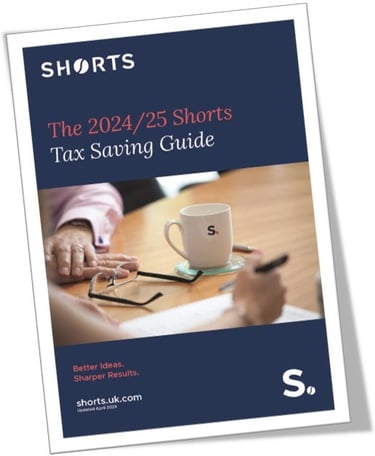
Making Tax Digital (MTD) for Income Tax Self-Assessment (ITSA) is fast approaching, and with it, a new points-based penalty system from HMRC. To stay on the right side of the rules and avoid unnecessary fines, it’s essential businesses and landlords understand how the new system works and what it means for their digital tax submissions.
Understanding the MTD penalty system
HMRC introduced a new points-based penalty system to make tax compliance fairer and more transparent, especially for small business owners who often face myriad business challenges daily. SMEs often lack an in-house finance function, which means they can occasionally miss a deadline from HMRC.
Instead of automatic fines, the system allows for a more flexible approach. Points are issued for late filing or payments, and only when a threshold is reached does a financial penalty apply. This helps distinguish between one-off mistakes and habitual non-compliance.
Points-based penalties
If you miss a submission deadline, you get one penalty point. When you reach the set number of points, which is determined by how often you need to file, you will be fined £200.
Taxpayers who fail to make timely submissions after reaching the relevant threshold, as determined by their submission frequency, will be charged a penalty. Their points total will not increase.
The penalty thresholds are as follows:
|
Submission Frequency |
Penalty Threshold |
|
Annual |
2 points |
|
Quarterly |
4 points |
|
Monthly |
5 points |
Under the points-based penalty system, if multiple deadlines are missed for the same type of submission in a single month, you’ll usually only receive one penalty point. This prevents businesses from reaching the threshold too quickly and improves their compliance.
If you miss different types of submissions, such as quarterly updates, end-of-period (EOP) statements, and final declarations in the same month, you may receive a point for each. Theoretically, you could accrue three penalty points if all three deadlines are missed.
How does the points penalty system work if you have multiple businesses?
If you run multiple businesses, you’ll only receive one point per submission type across all your businesses. For example, missing quarterly updates for three businesses in the same period earns one point; missing EOPS for all three earns another, and missing the final declaration earns a third.
The following conditions must be met once the penalty threshold has been reached in order to reset all points to zero:
1. A period of compliance (that is, meeting all submission obligations on time for the period of compliance — see period of compliance table below).
2. The taxpayer has submitted all the submissions that were due within the preceding 24 months. It does not matter if these submissions were initially late.
|
Submission Frequency |
Period of Compliance |
|
Annual |
24 months |
|
Quarterly |
12 months |
|
Monthly |
6 months |
Taxpayers who achieve the period of compliance but fail to send their outstanding submissions will remain at the penalty threshold. They will continue to be charged penalties for any further failures to make submissions on time.
Late payment penalties
Late payment penalties will be issued on the following basis:
First late payment
A first late payment penalty will be owed 30 days after the payment due date, based on the balance outstanding:
- No penalty will be payable if the tax is paid within 15 days of the due date
- After day 15, unpaid tax will attract a 3% penalty (2% before 1 April 2025)
- If tax remains unpaid by day 30, the penalties increase to 6% (4% before 1 April 2025)
Additional payments
From day 31, the taxpayer will begin to incur an additional penalty on the outstanding tax, which accrues daily, at a rate of 10% per annum on the outstanding amount. This will stop accruing once the outstanding amount due is cleared.
These penalties are charged in addition to interest. This can have a significant impact on small business owners. If difficulties occur, an owner can avoid these penalty issues by having a time-to-pay arrangement in place by the relevant date. Penalties will also not be charged where the taxpayer has a reasonable excuse.
Common mistakes that lead to penalties
.png?width=1080&height=1080&name=MTD%20Common%20Errors%20(1).png)
Many small businesses risk penalties under MTD for ITSA due to avoidable mistakes. Some common issues include:
Simply missing submission deadlines
Small business owners are often key to every element in running their business, making their time precious. Often, these pressures take priority over compliance deadlines, which results in missed deadlines.
Failing to maintain and submit accurate digital records
For business owners, maintaining up-to-date, accurate accounting records can easily be put aside to prioritise other business tasks.
Not using MTD-compliant software
HMRC’s strict filing requirements mean that options for compliant MTD ITSA software remain limited. Business owners who have historically held manual records will not have the required software for HMRC.
Submitting inaccurate or incomplete returns
In the past, business owners may have relied on their advisors to annually prepare the required accounts and returns from their core records without fully understanding the full requirements behind it. This could lead to inaccurate filings if taken in-house.
How to avoid MTD penalties
To avoid penalties under MTD for ITSA, business owners should focus on three key areas:
- Keep accurate digital records
- Use MTD-compliant, HMRC-approved software
- Meet all submission and payment deadlines
Setting up automated reminders, staying organised with quarterly updates, and seeking support from professional advisors will ensure that all compliance requirements are met and you avoid unnecessary costs. Acting early is essential, given that the changes will apply from April 2026.
If you're unsure what digital records you need to maintain, or which software options suit your requirements, an accountant can help you navigate these MTD ITSA queries.
Can you appeal points or penalties?
If you receive a penalty under Making Tax Digital (MTD), you have the right to challenge it. HMRC offers an internal review process, and if needed, you can escalate the appeal to the First Tier Tax Tribunal. You can appeal on grounds such as having a reasonable excuse for missing a deadline. The process follows the same steps as appealing a tax assessment, giving taxpayers a fair chance to explain their situation and avoid unjust penalties.
Stay compliant with MTD
After previous delays, MTD for ITSA is set to proceed in April 2026, with penalties and interest a real concern for many small business owners.
With the right support, tools, and guidance, businesses can easily stay compliant and stress-free. Shorts’ MTD for ITSA team is available to assist and can provide the right level of support to ensure a smooth and efficient transition into MTD for ITSA.

Liam Buttery
I work as a Director of Shorts' Owner-Managed Business team at Shorts. We provide businesses with advice on accounting, VAT and tax requirements to help them grow.
View my articlesTags: MTD ITSA
